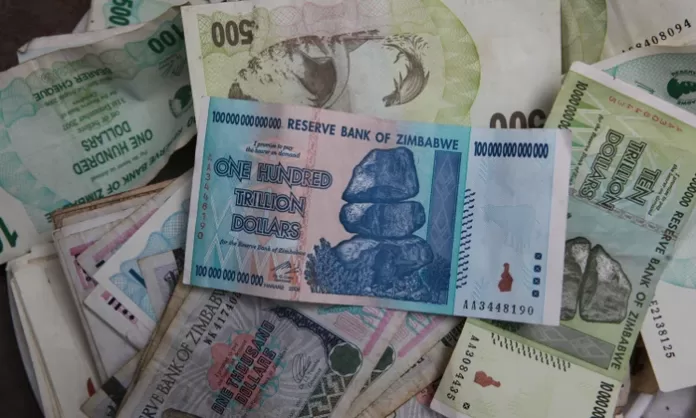In today’s interconnected world, some countries have made the decision to ditch their own currency in favor of using someone else’s. It might sound unusual, but for some nations, it just makes more sense. So, why would a country give up its own money? Well, there are a few key reasons—stability is a big one. Without a strong, stable currency, countries can face all sorts of economic issues like runaway inflation. In these cases, adopting a foreign currency can offer a sense of security and help avoid financial chaos.
There are also political or historical reasons at play. Some countries simply don’t have the resources to manage their own currency effectively, while others might find that using a foreign currency is part of a larger political or economic arrangement. It can be a practical decision for them, even if it seems a bit counterintuitive.
In this discussion, we’ll look at five countries that have opted to give up their own currency. We’ll explore the reasons behind their decision and how it affects their economies and daily lives.
1. Ecuador – U.S. Dollar (USD)
Ecuador is a well-known example of a country that gave up its national currency in favor of the U.S. dollar. The decision to dollarize occurred in 2000 after a period of economic instability, which included high inflation, banking crises, and the collapse of the Ecuadorian sucre (the national currency). The government’s decision to adopt the U.S. dollar helped stabilize the economy, restore confidence in the banking system, and encourage foreign investment.
While dollarization has provided economic stability, it has also meant that Ecuador no longer has control over its monetary policy. This limits the government’s ability to influence interest rates or control inflation through typical mechanisms like currency devaluation.
2. Panama – U.S. Dollar (USD)
Panama has used the U.S. dollar alongside its own currency, the balboa, since 1904. However, the balboa is essentially a symbolic currency today, as it is not printed in large quantities, and coins in balboa are used alongside U.S. dollars for daily transactions. The U.S. dollar is the dominant currency in Panama, and it is used for almost all transactions, including in the financial and banking sectors.
The dollarization of Panama was largely due to the country’s reliance on the U.S. economy, particularly following the construction of the Panama Canal, which fostered strong economic ties with the United States. Panama benefits from the stability of the U.S. dollar, making it an attractive destination for both investors and tourists.
3. El Salvador – U.S. Dollar (USD)
In 2001, El Salvador made the significant move of adopting the U.S. dollar as its official currency, replacing the Salvadoran colón. The decision was made to attract foreign investment, stabilize the economy, and lower inflation. Much like Ecuador, El Salvador struggled with high inflation and economic volatility during the late 1990s and early 2000s.
While the adoption of the U.S. dollar has contributed to economic stability and increased international trade, it also means that the country cannot print its own money or adjust interest rates to suit local economic needs.
Critics argue that dollarization has made the country vulnerable to external economic shocks, particularly those emanating from the U.S.
READ ALSO: 10 African Countries with Darkest Skin Tones
4. Zimbabwe – Multiple Foreign Currencies (USD, South African Rand, and others)
Zimbabwe’s experience with its own currency, the Zimbabwean dollar, became notorious in the late 2000s due to hyperinflation, which reached an astronomical 89.7 sextillion percent per month in November 2008. In response to this crisis, the Zimbabwean government abandoned its currency in 2009 and allowed foreign currencies to circulate freely, including the U.S. dollar, the South African rand, and the Botswana pula.
In 2019, the Reserve Bank of Zimbabwe reintroduced the Zimbabwean dollar (ZWL$) as the country’s official currency, but foreign currencies remain widely accepted due to ongoing issues with inflation and lack of confidence in the domestic currency. Zimbabwe continues to struggle with economic instability, and using foreign currencies has provided temporary relief, though it does not completely solve the country’s broader financial challenges.
5. The Bahamas – Bahamian Dollar (BSD) and U.S. Dollar (USD)
The Bahamas is another Caribbean nation where both the Bahamian dollar (BSD) and the U.S. dollar (USD) circulate widely. While the Bahamian dollar is the official currency, it is pegged 1:1 to the U.S. dollar, and the U.S. dollar is commonly used in daily transactions, especially in tourist areas. Many businesses, especially those in the tourism industry, will price goods and services in both currencies, and U.S. dollars are accepted without hesitation.
The use of the U.S. dollar in the Bahamas is largely due to its strong economic ties with the United States, as well as its role as a popular tourist destination for American travelers. The close economic relationship with the U.S. makes the U.S. dollar an ideal complement to the Bahamian dollar.


